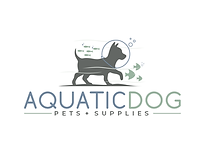Nitrate Limitation: how does it make red plants redder?
- petsplusllc
- Mar 13, 2024
- 2 min read
Updated: Jun 23, 2025
This post is an abbreviated version of the 2hr aquarist article of the same name, click through https://www.2hraquarist.com/blogs/fertilize-planted-tank/nitrate-limitation for the full reading.
Aquaticdog will soon carry the full line of 2hr aquarist products for your aquariums! Stay tuned....

For many aquatic plants, chlorophyll development is delayed when there is a lack of Nitrogen available - under this condition this can make plants that are red or orange appear significantly redder. For species such as Rotala rotundifolia and its variants colorata/H'ra/etc, Rotala Goias, Hygrophila pinnatifida & H. araguaia, Ludwigia arcuata & L. brevipes - they only get truly deep red under very low N conditions - using high light alone will not achieve the same effect

Rotala rotundifolia red; you can tell exactly at which point in its growth cycle that Nitrate limitation occurred in this tank; where the leaves start growing much redder.

A side by side comparison of Rotala H'ra grown in two different nutrient settings
Nitrate Limitation is achieved when all other nutrients are available in excess, but Nitrogen is supplemented at a controlled rate. This approach is often done by dosing less N in the water column, but using a rich substrate, which serves as a backup store for N. We do not want N to bottom out completely as this leads to stunting/stop of growth.
The other advantage of using controlled Nitrogen levels is that it gives tighter growth forms and shorter inter-node distance for some stem plants.
You can do it if your goal is to grow plants more slowly and choose a combination of plants that grow well in lean conditions. This approach is usually done with rooted plants in rich substrate.
How do I do Nitrate Limitation safely, without risking deficient plants?
For rooted plants use a rich substrate and continue to enrich it periodically with new aquasoil or APT Jazz. Ammonia contains plenty of Nitrogen; it binds to soil and makes nitrogen available to rooted plants. As long as your substrate has available nitrogen, letting water column Nitrate levels completely bottom out to zero is fine as rooted plants can feed from the substrate.
You can aim to have a slight nitrogen limitation rather than a very steep nitrogen limitation by dosing nitrates into the water column in small but regular amounts. APT 3/ Complete for example, aims to produce a slight nitrogen limitation effect, but still contains good amounts of N. Whereas APT zero aims for produce a steeper nitrate limitation effect as it does not contain Nitrogen. In tanks that use APT zero, Nitrogen must come from the livestock or enriched soil in the long run.

For further reading on planted aquarium substrates click below



